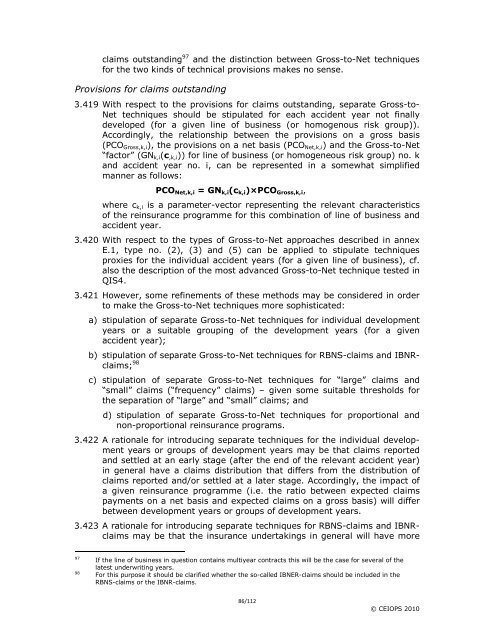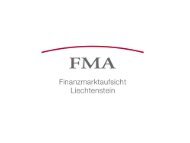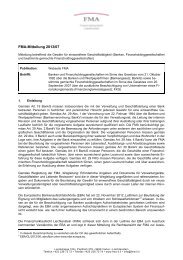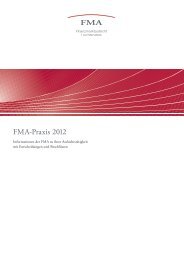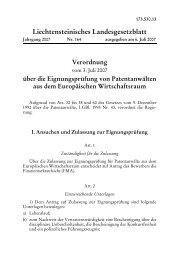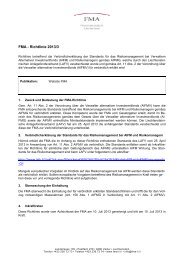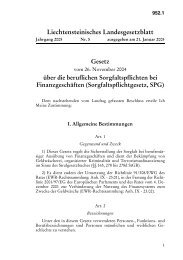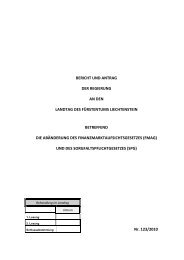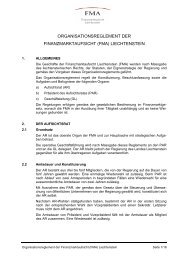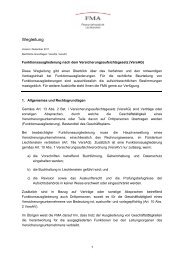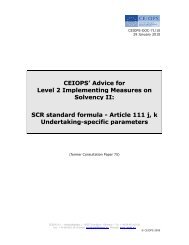CEIOPS' Advice for Level 2 Implementing ... - EIOPA - Europa
CEIOPS' Advice for Level 2 Implementing ... - EIOPA - Europa
CEIOPS' Advice for Level 2 Implementing ... - EIOPA - Europa
You also want an ePaper? Increase the reach of your titles
YUMPU automatically turns print PDFs into web optimized ePapers that Google loves.
claims outstanding 97 and the distinction between Gross-to-Net techniques<br />
<strong>for</strong> the two kinds of technical provisions makes no sense.<br />
Provisions <strong>for</strong> claims outstanding<br />
3.419 With respect to the provisions <strong>for</strong> claims outstanding, separate Gross-to-<br />
Net techniques should be stipulated <strong>for</strong> each accident year not finally<br />
developed (<strong>for</strong> a given line of business (or homogenous risk group)).<br />
Accordingly, the relationship between the provisions on a gross basis<br />
(PCOGross,k,i), the provisions on a net basis (PCONet,k,i) and the Gross-to-Net<br />
“factor” (GNk,i(c,k,i)) <strong>for</strong> line of business (or homogeneous risk group) no. k<br />
and accident year no. i, can be represented in a somewhat simplified<br />
manner as follows:<br />
PCONet,k,i = GNk,i(ck,i)×PCOGross,k,i,<br />
where ck,i is a parameter-vector representing the relevant characteristics<br />
of the reinsurance programme <strong>for</strong> this combination of line of business and<br />
accident year.<br />
3.420 With respect to the types of Gross-to-Net approaches described in annex<br />
E.1, type no. (2), (3) and (5) can be applied to stipulate techniques<br />
proxies <strong>for</strong> the individual accident years (<strong>for</strong> a given line of business), cf.<br />
also the description of the most advanced Gross-to-Net technique tested in<br />
QIS4.<br />
3.421 However, some refinements of these methods may be considered in order<br />
to make the Gross-to-Net techniques more sophisticated:<br />
a) stipulation of separate Gross-to-Net techniques <strong>for</strong> individual development<br />
years or a suitable grouping of the development years (<strong>for</strong> a given<br />
accident year);<br />
b) stipulation of separate Gross-to-Net techniques <strong>for</strong> RBNS-claims and IBNRclaims;<br />
98<br />
c) stipulation of separate Gross-to-Net techniques <strong>for</strong> “large” claims and<br />
“small” claims (“frequency” claims) – given some suitable thresholds <strong>for</strong><br />
the separation of “large” and “small” claims; and<br />
d) stipulation of separate Gross-to-Net techniques <strong>for</strong> proportional and<br />
non-proportional reinsurance programs.<br />
3.422 A rationale <strong>for</strong> introducing separate techniques <strong>for</strong> the individual development<br />
years or groups of development years may be that claims reported<br />
and settled at an early stage (after the end of the relevant accident year)<br />
in general have a claims distribution that differs from the distribution of<br />
claims reported and/or settled at a later stage. Accordingly, the impact of<br />
a given reinsurance programme (i.e. the ratio between expected claims<br />
payments on a net basis and expected claims on a gross basis) will differ<br />
between development years or groups of development years.<br />
3.423 A rationale <strong>for</strong> introducing separate techniques <strong>for</strong> RBNS-claims and IBNRclaims<br />
may be that the insurance undertakings in general will have more<br />
97<br />
If the line of business in question contains multiyear contracts this will be the case <strong>for</strong> several of the<br />
latest underwriting years.<br />
98<br />
For this purpose it should be clarified whether the so-called IBNER-claims should be included in the<br />
RBNS-claims or the IBNR-claims.<br />
86/112<br />
© CEIOPS 2010


